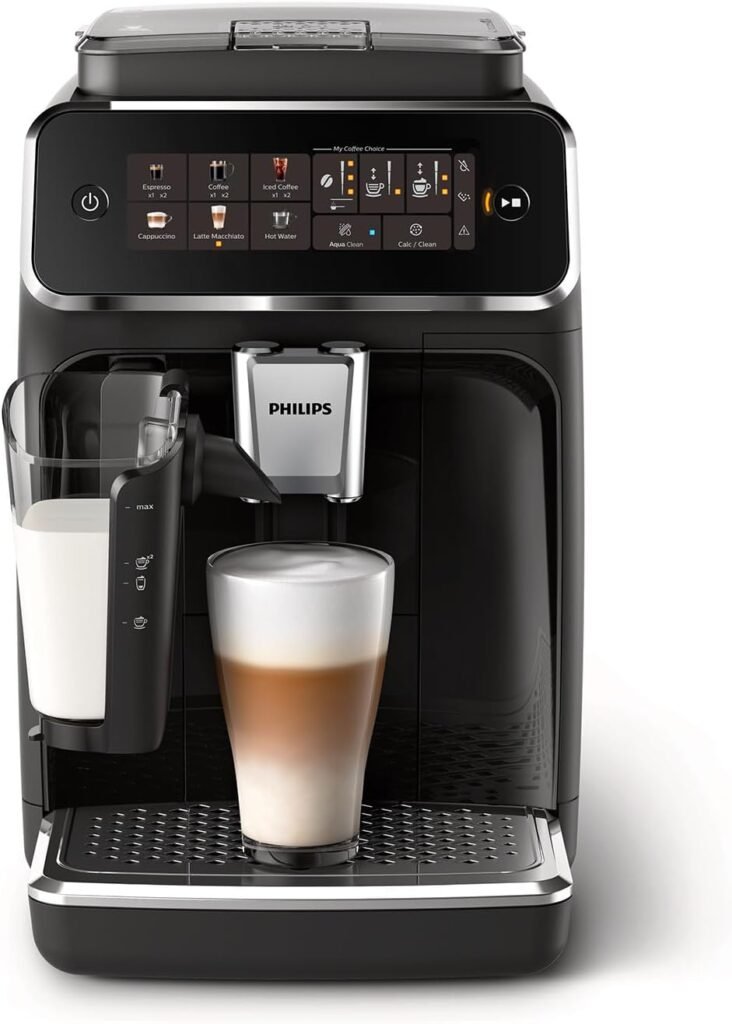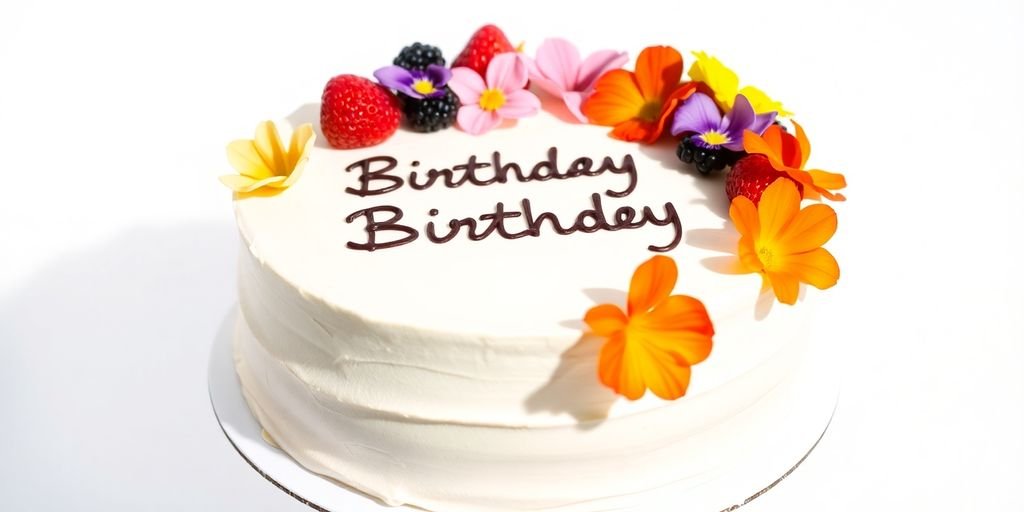
So, you’re thinking about making a birthday cake that’s diabetic-friendly but still delicious? Good news, you’re in the right place! Baking without sugar doesn’t mean you have to give up on taste or texture. With the right substitutes and a little know-how, you can whip up a cake that everyone will love, whether they’re watching their sugar intake or not. Let’s dive into the world of sugar-free baking and see how you can make a diabetic birthday cake that’s both healthy and tasty.
Key Takeaways
- Sugar substitutes can make a cake sweet without the sugar rush.
- Common alternatives include stevia, erythritol, and monk fruit.
- Sugar-free baking is beneficial for managing blood sugar levels.
- You can still achieve great texture and flavor without sugar.
- Decorating with fresh fruits and nuts adds natural sweetness and flair.
Understanding Sugar-Free Baking
The Science Behind Sugar Substitutes
Have you ever wondered why some sweeteners don’t taste quite like sugar? It’s all in the chemistry. Sugar substitutes interact with our taste buds differently than regular sugar does. Monk fruit extract, for example, gets its sweetness from antioxidants called mogrosides. Unlike sugar, it doesn’t spike blood sugar levels, making it a great choice for diabetics.
Common Sugar Alternatives for Cakes
When it comes to sugar-free baking, choosing the right substitute is key. Here are a few popular options:
- Stevia: A natural sweetener derived from plant leaves, often used in beverages and baking.
- Monk Fruit: This sweetener is calorie-free and doesn’t affect blood sugar, making it ideal for diabetics.
- Erythritol: A sugar alcohol that offers a sweet taste without the calories of sugar.
Benefits of Sugar-Free Baking
Opting for sugar-free baking can bring several health benefits. Firstly, it helps in managing blood sugar levels, which is crucial for those with diabetes. Additionally, reducing sugar intake can aid in weight management and improve overall health. By swapping sugar for alternatives, you can still enjoy your favorite treats without the guilt.
Baking without sugar doesn’t mean sacrificing flavor. It’s about finding the right balance and enjoying the sweet moments in life without the added sugars.
Crafting the Perfect Diabetic Birthday Cake

Essential Ingredients for a Sugar-Free Cake
Creating a sugar-free cake that doesn’t compromise on flavor starts with picking the right ingredients. Here are some essentials:
- Almond Flour: This is a great base for your cake. It’s light and gives a nice nutty flavor.
- Erythritol or Stevia: These sugar substitutes keep the sweetness without the sugar spike.
- Coconut Oil: Adds moisture and a subtle coconut flavor.
- Eggs: Essential for binding and adding richness.
- Vanilla Extract: Brings out the flavors in your cake.
Step-by-Step Baking Instructions
- Preheat the Oven: Set it to 350°F (175°C) and grease your cake pans.
- Mix Dry Ingredients: In a bowl, combine almond flour, baking powder, and a pinch of salt.
- Cream Butter and Sweetener: In another bowl, beat butter and erythritol until fluffy. Add eggs one at a time.
- Combine Mixtures: Gradually add dry ingredients to the wet mixture, alternating with coconut oil and vanilla extract.
- Bake: Pour batter into pans and bake for 25-30 minutes. Let it cool completely before frosting.
Tips for Achieving the Ideal Texture
- Don’t Overmix: Overmixing can make the cake dense. Mix until just combined.
- Sift the Flour: This helps in getting rid of lumps and makes the cake lighter.
- Add Moisture: A spoonful of yogurt or applesauce can keep the cake moist without adding sugar.
With the right ingredients and a little patience, you can craft a diabetic-friendly cake that’s just as delightful as any sugary treat. Remember, the goal is to make something everyone can enjoy, without the extra sugar.
Exploring Flavor Variations

Incorporating Natural Flavors
Bringing natural flavors into your sugar-free cake can make a world of difference. Ripe fruits like bananas, apples, or berries add a natural sweetness and a burst of flavor. Using fruit purees not only enhances taste but also keeps the cake moist. Citrus zest, like lemon or orange, can brighten up the flavor profile without adding sugar.
Using Spices and Extracts
Spices and extracts are your best friends when it comes to flavoring a sugar-free cake. Cinnamon, nutmeg, and ginger can give your cake a warm, cozy feel. Vanilla and almond extracts are classic choices that pair well with almost any cake. You can even get creative with flavors like lavender or rose for something unique.
Creating Unique Frosting Combinations
Frosting doesn’t have to be boring just because it’s sugar-free. You can mix cream cheese with a bit of vanilla extract for a tangy, sweet topping. Coconut cream with a hint of lime can give your cake a tropical twist. For a chocolate lover’s dream, try a cocoa and avocado blend for a creamy, rich frosting without the sugar overload.
Baking a sugar-free cake is like painting a canvas. You’re free to explore and mix different flavors until you find the perfect combination. It’s all about experimenting and having fun with it!
Decorating Your Sugar-Free Cake

Simple and Elegant Designs
Decorating a sugar-free cake doesn’t mean you have to skimp on style. Less is more when it comes to creating a sophisticated look. Start with a smooth layer of frosting, like a cream cheese buttercream, which offers a nice balance and isn’t overly sweet. Then, consider a simple garnish like a dusting of cocoa powder or a delicate sprinkle of edible flowers. These touches make your cake look refined without overwhelming it.
Using Fresh Fruits and Nuts
Incorporate fresh fruits and nuts for a natural, vibrant decoration. Berries, like raspberries and blueberries, not only add color but also a hint of tartness that complements the sweetness of the cake. Nuts, such as almonds or pecans, provide a satisfying crunch. Arrange them in patterns or clusters for a visually appealing effect. This approach not only enhances the look but also boosts the nutritional value of your cake.
Tips for Piping and Icing
Piping and icing can transform your cake from simple to stunning. Use a piping bag with different nozzles to create various textures and patterns. Start with basic shapes and gradually move to more intricate designs as you gain confidence. Keep your icing at the right consistency—not too stiff, not too runny—to ensure smooth application. And remember, practice makes perfect! If you’re feeling adventurous, try mixing a bit of natural food coloring into your icing for added flair.
Decorating a sugar-free cake is about highlighting its natural beauty. With a few thoughtful touches, you can create a masterpiece that’s as delightful to look at as it is to eat.
For a cake that’s received rave reviews, check out this sugar-free birthday cake that combines a delightful crumb with just the right amount of sweetness.
Serving and Storing Your Cake
Best Practices for Serving
When serving your sugar-free birthday cake, presentation matters. First, make sure the cake is at room temperature. This enhances the flavors and makes the texture just right. You might want to slice the cake with a warm knife to get those clean cuts—just run the knife under hot water and dry it before slicing. Arrange the slices neatly on a platter. For an extra touch, consider adding a sprinkle of powdered monk fruit or a few fresh berries on top. Remember, serving a cake that’s too cold can dull the flavors.

How to Store for Freshness
Storing your cake properly ensures it stays fresh and tasty. If you’re planning to eat it within a day or two, keep it in an airtight container at room temperature. For longer storage, you can refrigerate the cake, but make sure it’s wrapped well to prevent it from drying out. A layer of plastic wrap followed by foil works wonders. If you’ve used a frosting like whipped cream or yogurt, it’s best to keep the cake in the fridge to maintain its integrity.
Freezing and Thawing Tips
Sometimes, you might want to prepare your cake ahead of time. To freeze, wrap each layer individually in plastic wrap and then place them in a freezer bag. This method preserves the cake’s moisture and flavor. You can freeze the cake for up to three months. When you’re ready to enjoy it, let the cake thaw in the fridge overnight, then bring it to room temperature before serving. This gradual thawing process helps maintain the cake’s texture and taste.
A well-stored cake not only retains its flavor but also its texture, making every slice as delightful as the first.
For more tips on making cakes ahead, check out this healthy chocolate cake recipe that can be prepared in advance and stored perfectly.
Troubleshooting Common Issues
Avoiding a Dry Cake
Creating a moist cake without sugar can be tricky. Here are some tips to keep your cake from turning into a crumbly mess:
- Don’t overbake: Keep a close eye on your cake as it bakes. Sugar-free cakes can dry out more quickly.
- Use applesauce or yogurt: These can add moisture without adding sugar.
- Add a touch of oil: A little bit of oil can help maintain moisture.
Fixing Sunken Centers
Nobody likes a cake with a sunken middle. Here’s how to avoid it:
- Check your leavening agents: Make sure your baking powder or soda is fresh. Old leavening agents can cause your cake to fall flat.
- Avoid opening the oven door: Opening the oven too early can cause the cake to collapse.
- Ensure even mixing: Make sure your batter is well mixed to avoid any uneven rising.
Dealing with Overly Sweet Substitutes
Sugar substitutes can sometimes be too sweet. Here’s how to balance it:
- Start with less: It’s easier to add more sweetener than to fix an overly sweet cake.
- Mix with other flavors: Use vanilla or almond extract to balance the sweetness.
- Choose the right substitute: Not all sugar substitutes are created equal. Some are sweeter than others, so choose wisely.
Health Benefits of a Sugar-Free Cake

Impact on Blood Sugar Levels
Switching to a sugar-free cake can have a positive impact on maintaining stable blood sugar levels. For those managing diabetes, this can be a game-changer. Traditional cakes, loaded with sugar, can cause blood sugar spikes, leading to crashes that leave you feeling tired and sluggish. In contrast, sugar-free cakes, often made with alternatives like monk fruit or stevia, help keep your blood sugar steady. This means you can enjoy a slice without worrying about a sudden spike in glucose levels.
Weight Management Advantages
Choosing a sugar-free cake can be a smart move for weight management. Reducing sugar intake is often a key strategy in weight loss plans, as sugar is high in calories but low in nutritional value. By opting for a sugar-free cake, you cut down on empty calories, which can contribute to weight gain. Plus, sugar-free cakes often use ingredients that are lower on the glycemic index, helping you feel full longer and reducing the temptation to snack shortly after indulging.
Overall Health Improvements
The benefits of a sugar-free cake extend beyond just blood sugar and weight management. A diet with less sugar can lead to increased energy levels, clearer skin, and reduced cravings for sugary snacks. These cakes can be a part of a balanced diet that supports overall health improvements. By choosing sugar-free options, you’re not just indulging in a treat; you’re making a choice that aligns with a healthier lifestyle.
Enjoying a sugar-free cake doesn’t mean sacrificing flavor or satisfaction. Instead, it opens up a world of delicious possibilities that are kinder to your body. Embrace the change, and savor every bite without guilt.

Conclusion
So there you have it, a sugar-free birthday cake that doesn’t skimp on taste or fun. Whether you’re cutting back on sugar for health reasons or just looking to try something new, this cake is a winner. It’s light, fluffy, and full of flavor, proving that you don’t need sugar to make a cake that’s worth celebrating. Plus, with easy-to-find ingredients and simple steps, anyone can whip up this delightful treat. So go ahead, give it a try, and enjoy a guilt-free slice of birthday happiness. Happy baking!
Frequently Asked Questions
What makes this sugar-free cake different from regular cakes?
This sugar-free cake uses natural sweeteners instead of regular sugar, making it a healthier option for those watching their sugar intake.
Can I use regular flour instead of almond flour?
Yes, you can use regular flour, but it will change the texture and carb content of the cake.
Is this cake suitable for diabetics?
Yes, the cake is made with ingredients that are friendly for diabetics, but it’s always best to consult with a doctor.
How do I store leftover sugar-free cake?
You can store leftover cake in an airtight container in the fridge for up to a week or freeze it for longer storage.
What are some good frosting options for sugar-free cakes?
You can use cream cheese frosting or whipped cream sweetened with natural sweeteners like monk fruit or stevia.
Can I add fruit to the cake batter?
Yes, adding fruits like berries can enhance the flavor and add natural sweetness to the cake.
